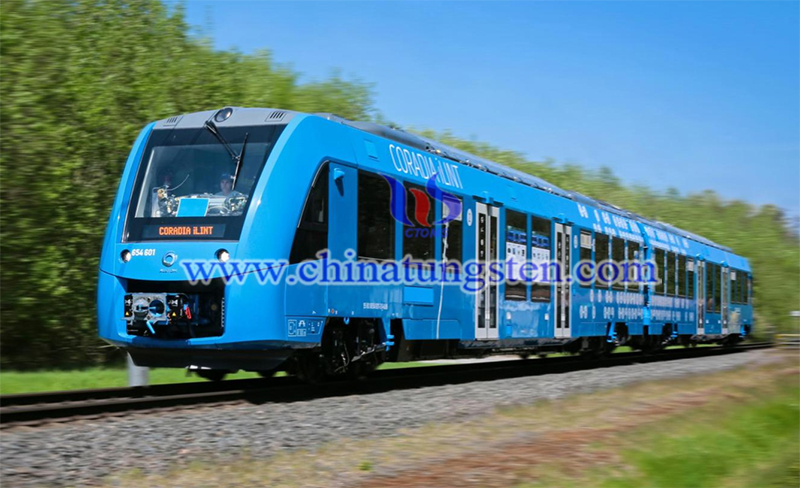South Korea's Hydrogen Fuel Train Vs Japan's Lithium Batteries Rail
- Details
- Category: Tungsten's News
- Published on Monday, 13 July 2020 19:19
With the improvement of lithium batteries technology, the railway vehicle industry has accelerated the development of vehicles that can run on batteries alone. Japan has recently launched a vehicle that runs on batteries, while in South Korea, Hyundai Motor Group is accelerating the development of a train that combines battery and hydrogen fuel technologies.
On July 7, according to the railway vehicle industry, the new high-speed railway vehicle "N700 S" will run on the 1069.1-km high-speed railway route, connecting Tokyo, Osaka, and Fukuoka. The N700S is a new vehicle that has been put on this route for the first time in 13 years. When the external power supply is interrupted, it can be driven by battery power alone. It is the world's first high-speed rail vehicle powered by lithium batteries. The vehicle uses Toshiba's lithium-ion battery.
The N700S' battery driving system is prepared to respond to emergencies such as power outages or natural disasters. So far, if all high-speed rail vehicles are powered off from the outside, the passengers inside will be helpless. If the stopped train needs to run, it needs to wait for the power to be reconnected or use the traction diesel locomotive. Due to the characteristics of the high-speed railway with a distance between stations of more than 10 kilometers, the maximum capacity is 1323 people, and the train compartment is only 16 knots, so it is impossible to quickly evacuate passengers in a short time. Especially when the train stops at bridges and tunnels, it is a serious burden.

In an emergency, the N700S can move at a maximum speed of 30 kilometers per hour on the battery alone. High-speed rail vehicles will become huge electric vehicles. The maximum travel distance was not disclosed, but the operator stated: "On battery power alone, trains can escape from all bridges and tunnels in the 515.4-kilometer interval from Tokyo to Osaka." In this interval, the longest bridge is about 1.4 kilometers and 8 kilometers respectively. Before this, Japan was actively carrying out attempts to use Toshiba's lithium batteries in 2018, and new types of trains that could run on batteries during power outages were put into the Tokyo Metro and attempt to graft secondary battery technology to railway vehicles.
At the same time, Hyundai Rotem in South Korea is developing a hydrogen fuel electric car based on the hydrogen fuel cell system of Hyundai Motor. Hyundai Motor plans to transfer its hydrogen fuel commercial vehicle development experience to railway vehicles and strive to ensure technology around next year. Relying solely on hydrogen fuel cells and l lithium batteries for mobility is expected to contribute to reducing the cost of railway facility construction in South Korea. In Japan, besides lithium battery, railway companies JR and Toyota Motor are accelerating the development of hydrogen-fueled railway vehicles to conduct empirical experiments next year.
- Tungsten Manufacturer & Supplier, Chinatungsten Online: www.chinatungsten.com
- Tungsten News & Prices of China Tungsten Industry Association: www.ctia.com.cn
- Molybdenum News & Price: news.molybdenum.com.cn
- Tel.: 86 592 5129696; Fax: 86 592 5129797; Email: sales@chinatungsten.com



 sales@chinatungsten.com
sales@chinatungsten.com